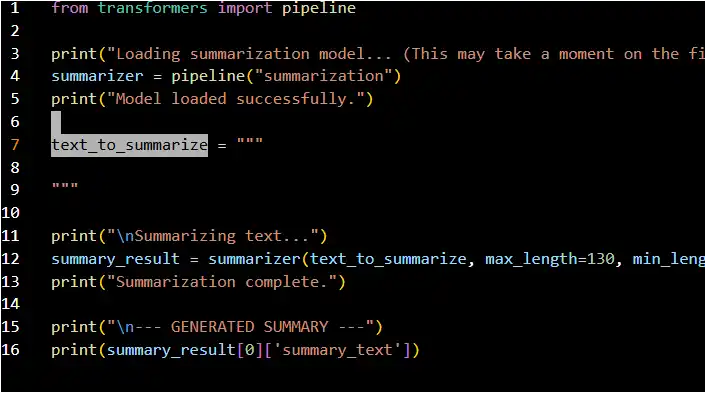Of course. Here is a detailed guide on the art of prompt engineering, expanding on your text and following your established formatting preferences.
Table of Contents
How to Write the Perfect Prompt for AI Tools
In the age of artificial intelligence, the quality of your output is determined by the quality of your input. A Large Language Model (LLM) is like a powerful, incredibly knowledgeable, but very literal assistant; it can do amazing things, but only if you give it a clear and comprehensive brief. Mastering prompt engineering—the art and science of crafting that perfect brief—is the essential skill for unlocking the full potential of any AI tool.
This guide provides a universal framework for writing effective prompts that can turn vague answers into precise, actionable results, whether you’re generating text, code, or images.
🧭 How to Understand the Model’s Strengths
Not all AI models are created equal. They are trained on different data, fine-tuned for different tasks, and possess unique reasoning styles. A prompt that works brilliantly in one model might confuse another. Before you start, get to know your tool.
- Read the Documentation: Official release notes often describe the model’s intended use cases and known limitations.
- Perform Simple Tests: Ask targeted questions to gauge its abilities. How well does it handle logic vs. creativity? Can it follow a long list of complex instructions?
- Observe Community Usage: See how others are successfully using the tool on forums and social media.
Understanding these specializations allows you to match the right tool to the right job and tailor your prompts accordingly.
| AI Model Type | Primary Strength | Best For… | Prompting Tip |
| Logical Reasoner (e.g., GPT-4 series) | Complex logic, problem-solving, code generation, step-by-step analysis. | Debugging code, planning projects, solving puzzles, generating structured text. | Use clear, numbered instructions. Ask it to “think step-by-step” to see its process. |
| Creative Writer (e.g., Claude series) | Handling very long documents, creative writing, summarization, maintaining a consistent tone. | Analyzing reports, drafting long articles, brainstorming stories, acting as a persona. | Provide large blocks of text as context. Focus heavily on defining the desired tone and style. |
| Visual Artist (e.g., Midjourney) | Artistic interpretation, photorealism, style blending, creating novel aesthetics. | Creating digital art, concept designs, photorealistic mockups, brand visuals. | Use descriptive visual language, camera terms (35mm lens), lighting (cinematic lighting), and artist names. |
⚙️ How to Add Context and Constraints
A prompt is more than a question; it’s a set of instructions. To build a great prompt, provide clear boundaries and rich context using a structured approach. The C.R.A.F.T. framework is a simple way to ensure you cover all the essential components.
- C – Context: The background information. Who is the audience? What is the subject? What is the ultimate goal?
- R – Role (or Persona): Tell the AI who it should be. This focuses its knowledge and style. “Act as a senior marketing copywriter.”
- A – Action: The primary task. Use a clear verb. “Write,” “summarize,” “create a table,” “analyze,” “refactor.”
- F – Format: The desired structure of the output. “Provide the answer in bullet points,” “format as a JSON object,” “write a three-paragraph email.”
- T – Tone: The style and voice of the response. “Use a friendly and encouraging tone,” “be formal and professional,” “write with witty humor.”
| Vague Prompt | A “CRAFTed” Prompt |
Tell me about prompt engineering | **[R]** Act as a technical writer creating a beginner's guide. **[C]** The audience is non-technical business professionals who have never used an LLM. **[A]** Write an introduction explaining what prompt engineering is and why it's important for getting value from AI tools. **[T]** Use a simple, encouraging, and professional tone. **[F]** The output should be a single paragraph of about 150 words. |
📌 How to Test, Refine, and Build a Library
Your first prompt is rarely your last. The most effective users treat prompting as an iterative conversation, refining their instructions until the output is perfect.
Techniques for Refinement
- One Change at a Time: If a prompt isn’t working, modify only one component of your CRAFT framework (e.g., change the Tone, add a Format constraint) to see how it affects the result.
- Ask for Alternatives: “That’s a good start. Can you give me three more variations with a more formal tone?”
- Use Negative Constraints: State what to avoid. “Do not use marketing jargon.” or “The summary should not exceed 100 words.”
- Build a Personal Library: When you craft a prompt that works exceptionally well, save it as a template. Over time, you’ll build a powerful, reusable toolkit.
| Prompt Template: Blog Post Introduction |
| “`text |
| Role: Act as an expert [Your Topic] blogger and SEO specialist. |
| Context: This is the introduction for a blog post titled “[Post Title]”. The target audience is [Describe Audience, e.g., “beginner Python developers”]. |
| Action: Write a compelling 150-word introduction. It must grab the reader’s attention, state the problem the post will solve, and include the main keyword “[Main Keyword]”. |
| Tone: [Choose one: Engaging / Professional / Humorous / Technical] |
| Format: A single paragraph. |
| Negative Constraint: Do not use clichés like “In today’s fast-paced world…”. |
| “` |
By understanding your AI tool, crafting prompts with deliberate structure, and refining your approach through iteration, you can transform any AI from a simple novelty into a reliable and indispensable partner for productivity and creativity.

